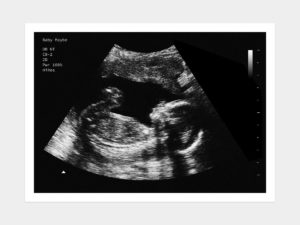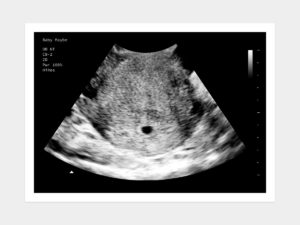
You have been pregnant for about 40 long weeks. You have taken your prenatal vitamins as directed. You have gotten exercise. You have eaten a balanced nutritious diet and monitored your weight gain. You have made regular visits to your health care provider and maybe you have had a couple of ultrasounds done. Now you have been sitting and waiting and waiting for “this baby to come out!”
Well, it will happen soon. It will happen and could start at a time when you least expect it. You have been reading the blogs on the BabyMaybeShop.com website and you are well prepared. Labor is a unique experience. It is something that can be over in a matter of hours. In some instances, labor can be very stressful and test a mother’s physical and emotional strengths. The best way to prepare for the delivery is to be well informed and to understand the changes that will take place in your body.
Labor is divided into 3 stages. During the first stage of labor irregular contractions occur which will gradually soften and open (dilate) the cervix. This is the longest stage of labor and can last many hours or even a few days. Eventually the contractions will become regular, persistent, and more frequent over time. The cervix will continue to soften and shorten and thin (efface). This allows the baby to move down the birth canal and eventually be delivered into the world.
The First Stage of Labor is divided into 3 phases:
During this phase you will likely feel some mild irregular contractions. You may experience a clear pink or slightly bloody discharge from your vagina (Bloody Show). Early labor for first-time moms average from hours to days. It is typically shorter with subsequent deliveries. During this first stage of your labor try to promote comfort and try to relax.
Initially contractions will last about 30 – 45 sec and give you 5 – 30 minutes of rest between contractions. The contractions start as mild and irregular but become progressively stronger and more frequent. They can feel like aching in the lower back, menstrual cramps, and pressure or tightening in the pelvic area.
During active labor your cervix will dilate from about 4 or 6 centimeters to 10 centimeters. The contractions will become stronger, closer together, and regular. Your water will break if it didn’t break in early labor. It is during active labor that you need to be heading to or already be admitted to your labor and delivery facility. It is during this phase that your level of excitement lessens and discomfort increases. It is not wrong to ask for pain medication or for a regional anesthetic, typically an epidural block. It is best to have had this discussion with your health care provider early in the pregnancy so that a decision can be made quickly. Your baby will begin to descend within the uterus and into the birth canal. If this is your first baby, active labor will last on average between 5 – 7 hours. If this is not your first baby, your active labor will likely be shorter, lasting between 2 – 4 hours. If you choose to have an epidural your active labor may last longer. Always remember, each woman’s labor is different.

This period is the most challenging, it marks the transition to the 2nd stage of labor. It can be particularly intense and painful. The cervix is fully dilated up to 10 centimeters. Contractions are usually very strong, coming every 2 – 3 minutes and lasting up to a minute or longer. Shaking and shivering are very common signs of the transition period. You can experience rectal pressure as if you have to move your bowels. You may feel a strong urge to push, don’t push unless you have been told to do so by your caregiver. You might experience chills, nausea, vomiting, or gas. This is the hardest phase, but it is the shortest. The transition typically lasts 30 minutes to about 2 hours.
The Second Stage of Labor results in the birth of your baby!
You will deliver your baby at the end of the second stage of labor. It can take a few minutes to a few hours to push your baby into the world. The length of the second stage depends on whether you have given birth before and how many times and the position of the baby. The second stage is longest for first time moms.
Your health care provider will tell you when to start pushing along with your contractions. Your caregiver may tell you to bear down during each contraction or push when you feel the urge to do so. With your caregiver’s permission you may experiment with different positions during pushing to improve your physical condition. You most likely will be on your back during the pushing, but you can push while squatting, sitting, kneeling, or on your hands and knees.
Uterine contractions, the force of your abdominal muscles during pushing, and gravity put pressure on the baby to continue to move down through the birth canal. After a time, the perineum (the tissue between your vagina and anus) will bulge with each push. Soon the top of your baby’s scalp can be seen. Your baby’s head will turn to one side, the chin will rest on the chest, and the back of the head will lead the way. The baby’s head continues to advance and with each contraction or push the head will begin more visible. This is “crowning.” After the baby’s head is delivered the rest of the baby’s body will follow. The baby’s shoulders are delivered and the rest of the baby easily slips out.
Your provider will suction the baby’s mouth and nose to remove any mucus, then feel around the neck to make sure the umbilical cord is not wrapped around it. Listen carefully for your baby’s first sound.
Your baby will be dried and wrapped in a warm blanket and very often is then placed on top of your belly for you to touch or kiss or simply marvel at your new daughter or son. You will likely feel many different emotions such as euphoria, awe, pride, disbelief, or excitement. You will also likely feel an intense sense of relief, it’s all over. Exhausted as you may be, you will probably feel a burst of energy and thoughts of sleep will vanish.
The umbilical cord will be clamped in 2 places and the cord will be cut between the 2 clamps. It is not unusual to have your partner cut the cord.
Today is your baby’s birthday

The Third Stage of Labor is the delivery of the placenta.
After the delivery you will likely feel a tremendous sense of relief. Now the third stage of labor occurs, the delivery of the placenta (afterbirth). The placenta is usually delivered in about 30 minutes. After the baby is delivered, your uterus will begin to have small gentle contractions designed to separate the placenta from the uterine wall. The caregiver may apply some pressure to your uterus or apply some gentle pulling traction to the umbilical cord that is still attached to the placenta. These things are done to encourage the placenta to evacuate the uterus. Once your provider sees signs of placenta separation from the uterine wall you may be asked to gently push to help expel the placenta. Usually only one small push is all that it takes. It is not difficult or painful. You may be given some medication to encourage uterine contraction to help minimize bleeding. Once this has been done your uterus may feel very hard, this is a positive sign indicating that the uterus has “clamped down” on any potential bleeding.
Savor this special time. You have traveled on a 40-week journey through the trimesters of pregnancy and have ended with the delivery of a new baby. The hardest task you will likely have now is choosing a name for your new family member. Congratulations mom!

The information is presented to be a general guide to present the events surrounding labor and delivery. It is for informational purposes only. The information provided is not intended to be the only information available concerning labor and delivery. The material provided is not expected to be a substitute for advice or information from your physician or health care provider.
If you have any questions, concerns, apprehensions, unease, or worry about your delivery contact your health care provider immediately.








ALL WARRANTIES OF ANY KIND WHATSOEVER EXPRESS, IMPLIED, AND STATUTORY, ARE HEREBY DISCLAIMED. ALL IMPLIED WARRANTIES OF MERCHANTABILITY AND FITNESS FOR A PARTICULAR PURPOSE ARE HEREBY DISCLAIMED. THE PRODUCTS SOLD, INCLUDING SONOGRAMS, ULTRASOUNDS, FAKE PREGNANCY DOCUMENTS, AND FAKE PREGNANCY TESTS ARE SOLD ‘AS IS’ BASIS.
THE SITE CANNOT AND DOES NOT CONTAIN [MEDICAL/ LEGAL/ FITNESS/ HEALTH/ OTHER] ADVICE. THE INFORMATION IS PROVIDED FOR PRANKS PURPOSES ONLY AND IS NOT A SUBSTITUTE FOR PROFESSIONAL ADVICE.
ACCORDINGLY, BEFORE TAKING ANY ACTIONS BASED UPON SUCH INFORMATION, WE ENCOURAGE YOU TO CONSULT WITH THE APPROPRIATE PROFESSIONALS. WE DO NOT PROVIDE ANY KIND OF MEDICAL/ LEGAL/ FITNESS/ HEALTH ADVICE. THE USE OR RELIANCE OF ANY INFORMATION CONTAINED ON THIS SITE, OR OUR MOBILE APPLICATION, IS SOLELY AT YOUR OWN RISK.
THIS WEBSITE DOES NOT PROVIDE MEDICAL ADVICE. THE INFORMATION, INCLUDING BUT NOT LIMITED TO, TEXT, GRAPHICS, IMAGES AND OTHER MATERIAL CONTAINED ON THIS WEBSITE ARE FOR PRANK PURPOSES ONLY. NO MATERIAL ON THIS SITE IS INTENDED TO BE A SUBSTITUTE FOR PROFESSIONAL MEDICAL ADVICE, DIAGNOSIS OR TREATMENT. ALWAYS SEEK THE ADVICE OF YOUR PHYSICIAN OR OTHER QUALIFIED HEALTH CARE PROVIDER WITH ANY QUESTIONS YOU MAY HAVE REGARDING A MEDICAL CONDITION OR TREATMENT AND BEFORE UNDERTAKING NEW HEALTH CARE REGIMEN, AND NEVER DISREGARD PROFESSIONAL MEDICAL ADVICE OR DELAY IN SEEKING IT BECAUSE OF SOMETHING YOU HAVE READ ON THIS WEBSITE.
THE PARTIES AGREE THAT ANY PRODUCT PURCHASED ON THE BABY MAYBE WEBSITE SHALL NOT BE USED FOR ANY PROPOSE OTHER THAN AS A PRANK. WITHOUT EXCEPTION NO BABY MAYBE PRODUCT SHALL BE PROVIDED/SUBMITTED TO ANY GOVERNMENTAL OR OTHER AGENCY, MEDICAL DOCTOR, ARBITER OF A DISPUTE, AS PROOF OF PREGNANCY, PAST OR CURRENT, OR TO CLAIM ANY BENEFIT FOR WHICH A PREGNANT WOMAN MAY BE ELIGIBLE, OR ENTITLED TO RECEIVE, BASED ON HER BEING PREGNANT. NO HIPAA PROTECTED PATIENT HEALTH INFORMATION CONNECTED TO ANY BABY MAYBE PRODUCT, IS INTENDED, OR CONVEYED, WITH RESPECT TO THIS SALE.
THE PARTIES AGREE THAT BABYMAYBE IS NOT RESPONSIBLE FOR ANY LIABILITY WHATSOEVER FOR DELAYS IN SHIPPING THE PRODUCT. THE PARTIES FURTHER AGREE THAT THE SOLE REMEDY FOR ANY SHIPPING DELAYS IS THE REFUND OF THE PURCHASER’S PAYMENT FOR THE PRODUCT.
THE PARTIES AGREE THAT THE FORUM FOR ANY LEGAL ACTION ASSOCIATED WITH THE SALE AND PURCHASE OF THE PRODUCT IS THE STATE OF ILLINOIS.